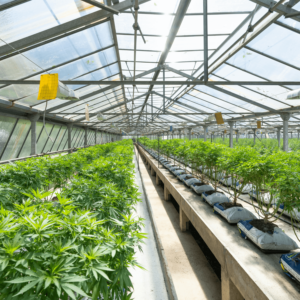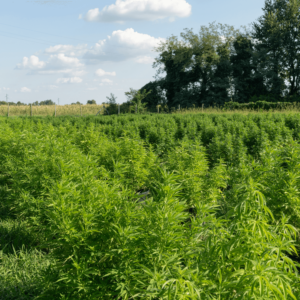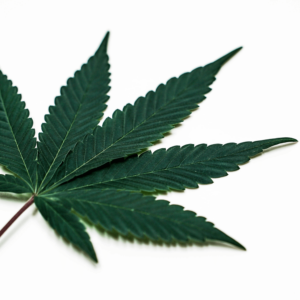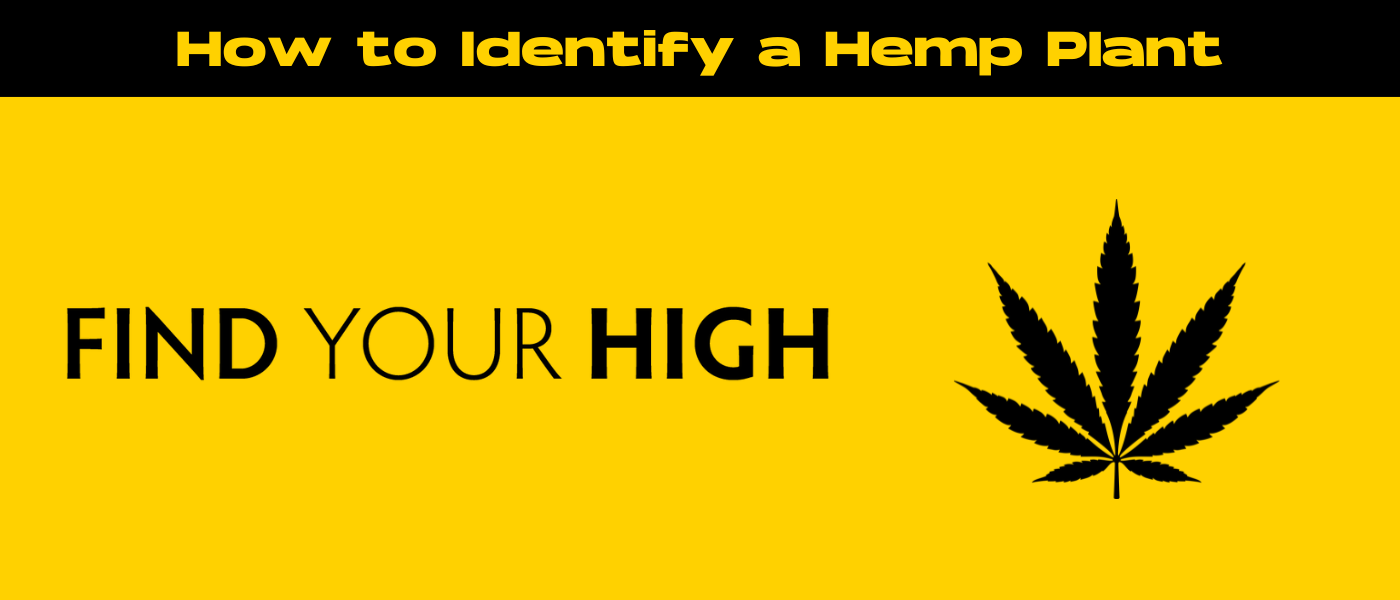If you’ve ever come across a tall, leafy plant and wondered whether it’s a hemp plant or something else, you’re not alone! With hemp making a huge comeback in agriculture, it’s more important than ever to understand how to identify hemp plant.
Whether you’re undergoing hemp cultivation it for industrial purposes, using it for fiber, or simply curious, knowing how to tell hemp apart from its look-alikes (like marijuana or weeds) can save you time and effort. In this guide, we’ll walk you through everything you need to know about identifying hemp plants, with practical tips and clear explanations. Let’s begin!

What Is Hemp, Anyway?
Before diving into identification, it’s important to understand what industrial hemp actually is. Technically, hemp is a variety of Cannabis sativa, but it’s grown for industrial purposes rather than for recreational or medicinal use.
While it’s a member of the cannabis family, it has one major distinction—hemp contains less than 0.3% THC, the psychoactive compound found in marijuana. This makes hemp a non-intoxicating plant used primarily for textiles, food products, biodegradable plastics, and even medicinal purposes when processed properly.
In fact, hemp’s rich history dates back thousands of years as a staple crop for fiber, rope, and more. But its recent resurgence in the wellness and sustainable industries has sparked a renewed interest in hemp production for its many practical benefits. Now that we know what hemp is, let’s talk about how to identify it!
Physical Characteristics of Hemp
Identifying a hemp plant isn’t as tricky as you might think. Hemp has a distinct set of physical characteristics that set it apart from other plants. Here’s what to look for:
- Leaves:
- Hemp leaves are long, narrow, and pointed, often resembling a delicate fan shape.
- The leaves typically have 5-7 leaflets, but they can sometimes range from 3 to 9.
- The color varies from light green to deep green, depending on the growing conditions.
- Stalks and Stems:
- Male plants grow tall—usually 6–12 feet—often with slender, spindly stems.
- The stems are fibrous and tend to be hollow, which is important for industrial hemp fibers extraction.
- Unlike marijuana, which is bushy and compact, hemp has fewer branches and a more vertical, elongated appearance.
- Flowers and Seeds:
- Female plants produce small, unremarkable female hemp flowers that cluster in a dense formation. These flowers rarely form dense buds like marijuana.
- Hemp seeds are small and oval, typically grayish-brown in color. They’re also tough and resilient, perfect for planting. Hemp seeds are often turned into extraction products like hemp seed oil or even hemp seed milk.
- Roots:
- Hemp has a deep taproot that helps it access water and nutrients, especially in drier conditions.
- The plant’s shallow, fibrous roots make it easy to replant and regenerate after harvesting.
When you spot these characteristics, you’re well on your way to identifying hemp.
Hemp vs. Cannabis Plant: Key Differences
So, how can you tell the difference between hemp and marijuana? Both plants are technically from the same species, but they serve very different purposes. Here are some key differences:
- THC Content:
- The most significant difference is THC content. Hemp contains less than 0.3% THC, which means it won’t get you high. Marijuana, on the other hand, has a much higher THC content (typically over 20% in recreational strains), which is why it’s used for its psychoactive effects.
- Plant Structure:
- Hemp tends to be tall and skinny, growing in a more vertical direction. It’s often grown in rows for industrial use.
- Marijuana is generally bushier, with denser branching, and typically grows shorter. It’s cultivated for its buds and THCa flower.
- Leaf Shape and Buds:
- Hemp leaves are narrow, while marijuana leaves are broader and more staggered.
- Hemp doesn’t produce dense buds like marijuana, and its flowers are far less aromatic.
- Smell:
- Hemp has a milder smell, whereas marijuana plants emit a much stronger, pungent odor due to their high resin content.
These differences should help you spot hemp from marijuana in the wild or at a farm.
How to Identify Hemp in the Wild or in a Field
If you’re spotting hemp out in the wild or in a field, there are a few important things to keep in mind. Hemp can grow in various environments, but it thrives in fertile soil with good drainage and moderate climates. Look for it in agricultural fields, on farms, or even in naturalized areas where it has been planted commercially.
Here’s what to look for in the field:
- Height and Growth Pattern: Hemp plants are usually quite tall (6–12 feet) and slender. They tend to have fewer branches than marijuana plants, which gives them a more upright appearance. If you see plants that are similarly tall but bushier with denser flowers, they’re more likely marijuana.
- Flowering Season: Hemp typically flowers in late summer or fall, and by this time, it’s easy to spot its less-dense flowers compared to the compact buds of marijuana.
- Stalks and Leaves: Hemp stalks are thin, fibrous, and hollow. The leaves, which are elongated and sharp, tend to grow in a fan-like arrangement.
Common Hemp Look-alikes
While hemp is relatively easy to identify, it can sometimes be mistaken for other plants. Here are some common look-alikes and how to tell them apart:
- Japanese Knotweed: This invasive plant is often mistaken for hemp because of its tall, bamboo-like structure. However, its leaves are more rounded and its stalks are solid, not fibrous.
- Rogue Cannabis Varieties: Sometimes, wild cannabis plants are found growing in nature, and these can resemble hemp. However, marijuana plants tend to have bushier growth and produce much denser flowers, so a close inspection of the buds will help you tell the difference.
- Hackberry: A member of the Cannabaceae family, it can resemble hemp but has different leaf and flower structures. The leaves are more heart-shaped, and the plant’s overall form is different.
To distinguish hemp from these look-alikes, pay attention to:
- The leaf shape and size (hemp leaves are long and pointed, while many look-alikes have rounder leaves).
- The thickness of the stalks (hemp’s are fibrous and hollow, while others are solid).
- Flower and bud formation (hemp flowers are not as dense or aromatic as marijuana buds).

Best Practices for Hemp Identification
If you’re serious about identifying hemp in the wild or in a garden, here are some practical tips to make sure you’re on the right track:
- Use a Magnifying Lens: A magnifying glass or small microscope can help you inspect small characteristics, like the leaf veins, resin glands, and other fine details.
- Consult Experts: If you’re unsure, don’t hesitate to ask a local botanist, hemp farmers, or use plant identification apps like PlantSnap or Seek to get a clear ID.
- Test THC Levels: Especially if you’re cultivating hemp, it’s essential to verify the THC levels to ensure they meet legal standards (less than 0.3%). You can do this with a field test or send a sample to a lab for analysis.
- Legal Considerations: Remember that hemp’s legal status depends on its THC content. In places where marijuana is illegal, knowing how to distinguish hemp from other cannabis varieties can keep you compliant with local laws.
- Safety First: When in doubt, always consult an expert or a local authority on plant identification to avoid confusion with potentially harmful plants.
How to Identify Hemp Plant: Conclusion
Identifying hemp is easier than you might think once you know what to look for. From its slender, fibrous stalks to its narrow, fan-shaped leaves, hemp has distinct features that set it apart from marijuana and other weeds. Whether you’re growing hemp for industrial purposes or just exploring its presence in the wild, this guide will help you recognize it with confidence.
By understanding hemp’s physical traits, learning to spot common look-alikes, and using best practices for identification, you can ensure that you’re dealing with the right plant. Happy identifying!

Frequently Asked Questions
1. Is hemp and Marijuanas the same plant?
Female hemp plants, male hemp plants, and marijuana are all varieties of Cannabis sativa plants, but they are different. Hemp contains less than 0.3% THC, making it non-psychoactive in its raw form, while marijuana has higher THC levels and is used for recreational or medicinal purposes.
2. What plant looks like hemp?
Plants like Japanese knotweed, rogue cannabis varieties, and hackberry can resemble hemp. However, they differ in leaf shape, stalk thickness, and flower structure.
3. Why is the hemp plant illegal?
Hemp is generally legal in many places, but in some regions, it may be illegal if it exceeds the legal THC limit (0.3%). The legal status depends on the THC content and local regulations regarding cannabis.
4. What is the test for hemp identification?
The most reliable test for hemp identification is a THC test, which measures the plant’s THC content. Hemp must contain less than 0.3% THC to be considered legal. A magnifying lens or app can also help identify specific plant characteristics like leaf structure.





